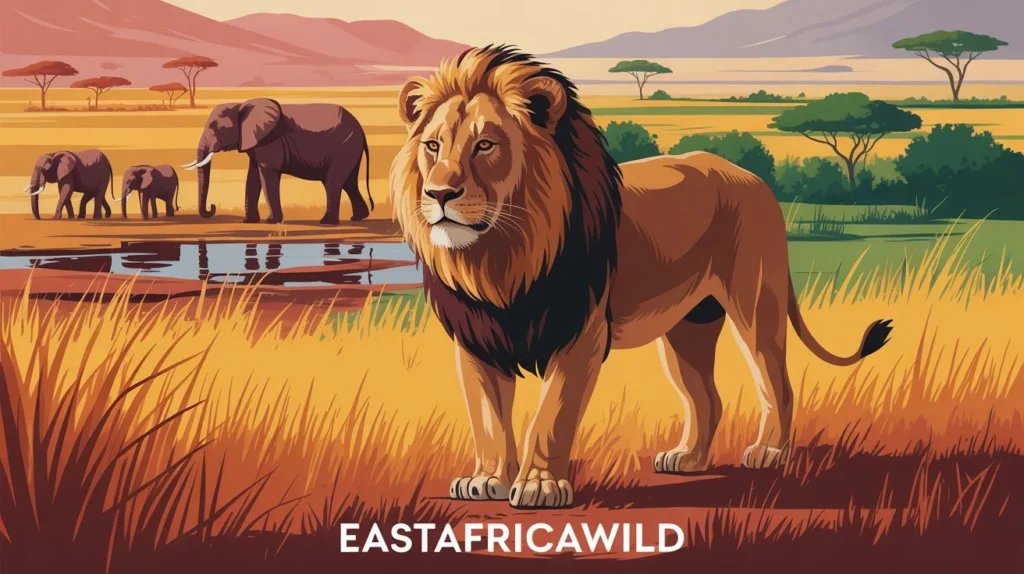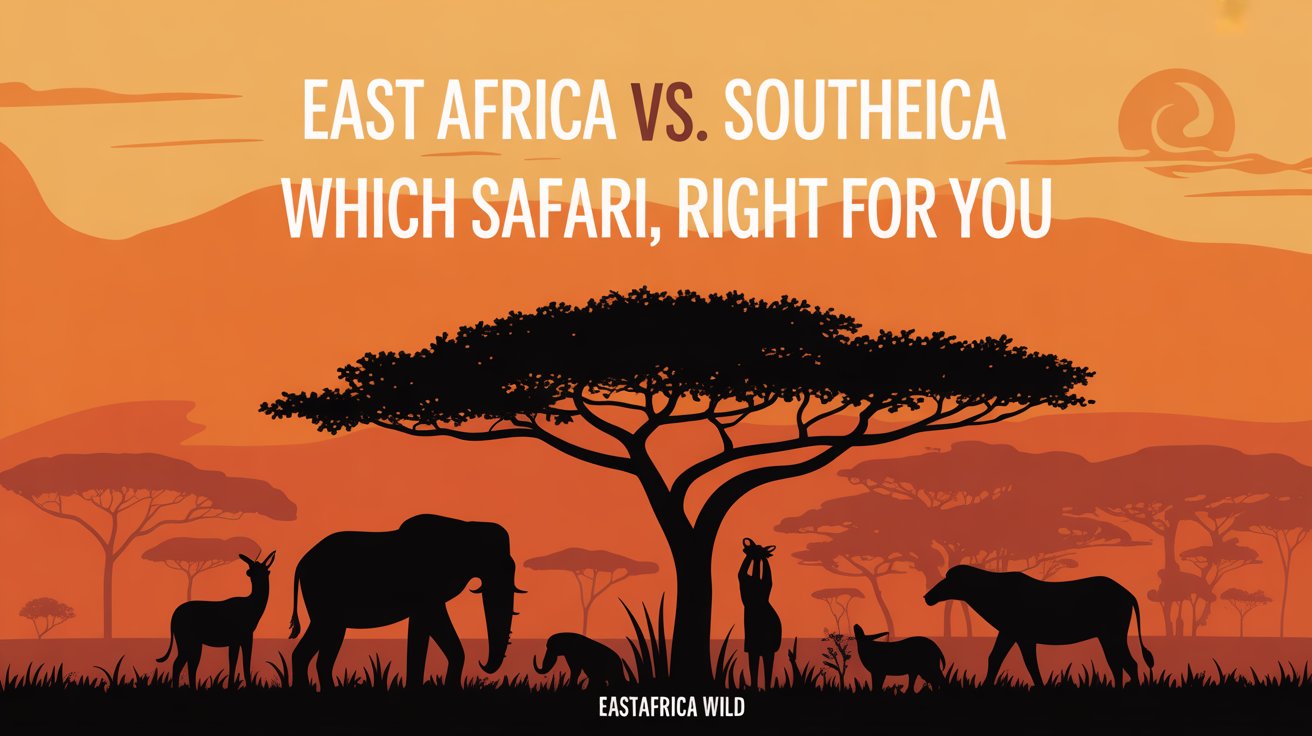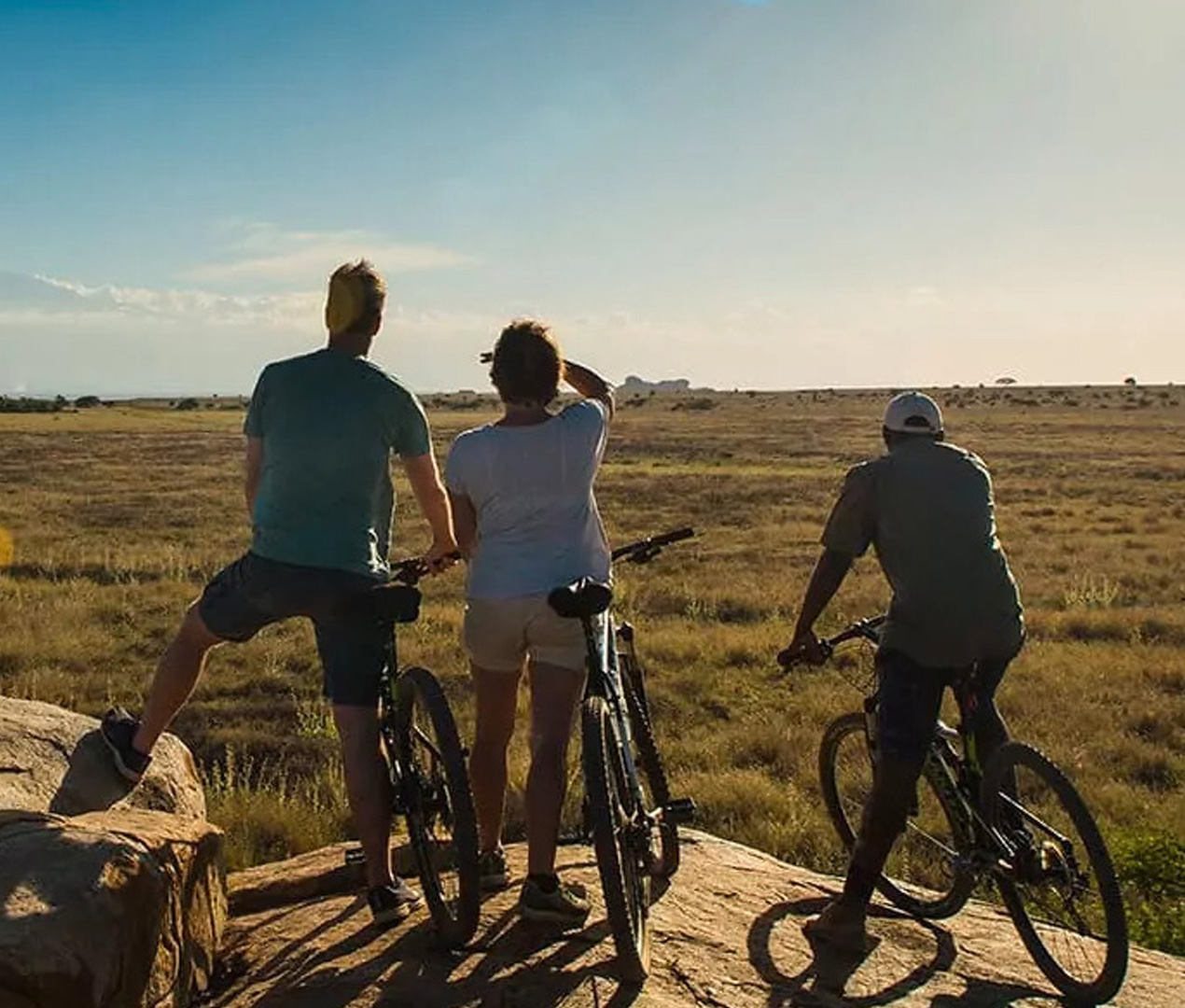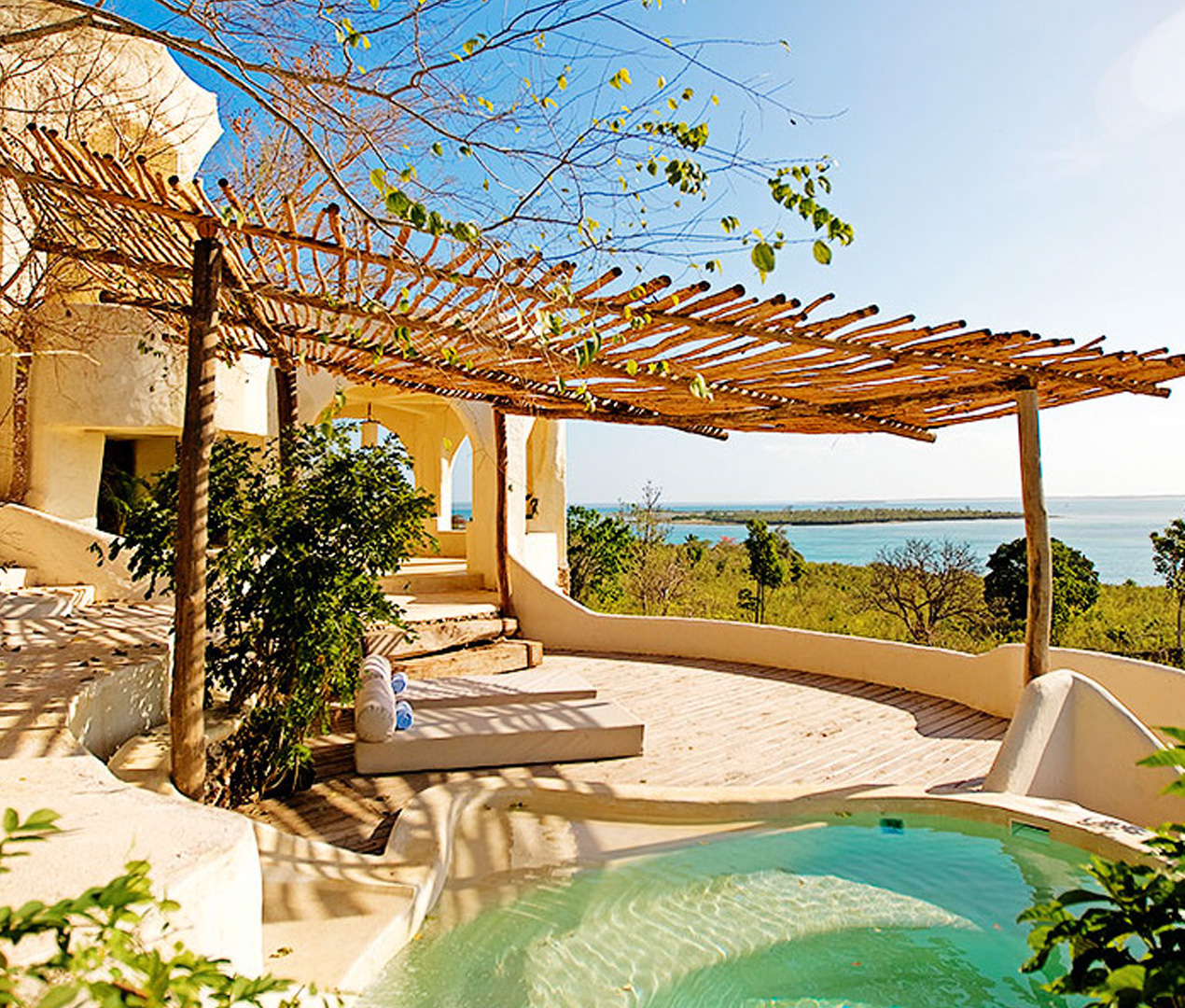Planning an African safari is a dream for many travelers, but one of the toughest decisions is choosing where to go. Two regions dominate the safari experience: East Africa (Kenya, Tanzania, Uganda) and Southern Africa (South Africa, Botswana, Namibia, Zambia, Zimbabwe). Both offer breathtaking wildlife encounters, iconic landscapes, and unforgettable adventures but they are very different in style, cost, and experiences.
Here’s a detailed comparison to help you choose the perfect safari for your journey.
Also Read : Are African Safari Tours Safe? A Complete Guide for Travelers
1. Wildlife Diversity and Sightings

- East Africa: Famous for the Great Wildebeest Migration, where over 1.5 million wildebeest and zebra cross the Serengeti and Masai Mara, often chased by predators at the Mara River. East Africa’s wide plains are also home to the Big Five (lion, leopard, elephant, buffalo, rhino) along with large cheetah populations, flamingo-filled lakes, and primates in Uganda and Rwanda.
- Southern Africa: Excellent for close-up encounters with Big Five animals, especially in South Africa’s Kruger National Park and Botswana’s Okavango Delta. Southern Africa also offers desert-adapted elephants in Namibia, large herds of buffalo in Zambia, and high rhino populations in private reserves.
👉 If your dream is the migration spectacle or gorilla trekking, East Africa wins. If you want varied ecosystems and reliable Big Five sightings, Southern Africa shines.
2. Safari Styles and Accommodations
- East Africa: Safaris are often focused on game drives across vast plains. Accommodations range from luxury lodges perched on escarpments with sweeping views to mobile tented camps that follow the migration. Bush flights are common for moving between parks.
- Southern Africa: Known for its private game reserves and luxury lodges, where expert trackers guide smaller safari vehicles for more intimate sightings. Here you can mix traditional game drives with walking safaris, boat cruises, and even mokoro (canoe) rides in the Okavango Delta.
👉 East Africa feels more wild and traditional, while Southern Africa offers more variety and comfort.
3. Best Time to Visit
- East Africa: The dry season (June–October) is best for wildlife viewing and the Great Migration crossings. January–February is another great window for predator action and calving season in the Serengeti.
- Southern Africa: The dry winter months (May–October) provide the clearest game viewing as animals gather at waterholes. November–March brings lush green landscapes, birdwatching opportunities, and fewer tourists.
👉 Both regions peak in the dry season, but East Africa’s migration makes timing extra important.
4. Accessibility and Infrastructure
- East Africa: International arrivals usually land in Nairobi (Kenya) or Kilimanjaro (Tanzania). From there, many parks require long drives or bush flights, which adds cost and time but also adventure.
- Southern Africa: Easier to access, especially via Johannesburg and Cape Town, with good road networks and short flights connecting safari destinations. Self-drive safaris are possible in South Africa and Namibia, giving more flexibility.
👉 Southern Africa is generally more traveler-friendly and convenient, while East Africa feels more like a classic expedition.
5. Safari Costs
- East Africa: Safaris can be pricey, especially in Tanzania and Kenya, where park fees are high. Luxury migration camps cost thousands per night, while budget camping options are limited but available.
- Southern Africa: Offers a wider price range. South Africa, in particular, has more affordable mid-range safaris, while Botswana is among the most expensive luxury safari destinations. Private reserves often include all meals and activities, giving good value for money.
👉 Southern Africa tends to be better for budget-conscious travelers, while East Africa often leans toward premium safari experiences.
6. Unique Experiences
- East Africa:
- The Great Migration (Kenya & Tanzania)
- Gorilla trekking in Uganda or Rwanda
- Hot-air balloon safaris over the Serengeti
- Cultural encounters with the Maasai and Samburu tribes
- Southern Africa:
- Mokoro canoe safaris in Botswana’s Okavango Delta
- Walking safaris in Zambia (the birthplace of this style)
- Night drives in private reserves
- Exploring the Namib Desert dunes or Victoria Falls on the Zambia/Zimbabwe border
👉 Both regions offer bucket-list experiences, but East Africa emphasizes epic wildlife spectacles, while Southern Africa delivers diverse adventure activities.
7. Safety and Health Considerations
Both regions are generally safe for travelers with reputable operators. However:
- East Africa: Malaria zones are widespread, and vaccinations (such as yellow fever) may be required.
- Southern Africa: Many areas are also malaria zones, but South Africa has malaria-free reserves that are ideal for families with children.
👉 Travelers should consult a doctor before departure for up-to-date health advice.
Quick Comparison Table
| Feature | East Africa (Kenya, Tanzania, Uganda) | Southern Africa (South Africa, Botswana, Zambia, etc.) |
|---|---|---|
| Wildlife | Great Migration, Big Five, gorillas | Big Five, rhinos, desert & river ecosystems |
| Safari Style | Wide plains, game drives, tented camps | Luxury lodges, walking, mokoro rides, night drives |
| Best Season | Jun–Oct (migration), Jan–Feb (calving) | May–Oct (dry season), Nov–Mar (green birding season) |
| Accessibility | Longer drives, bush flights | Good roads, self-drive options, easy flights |
| Cost | Higher park fees, premium lodges | Wider budget range, good mid-range in South Africa |
| Unique Experiences | Migration, gorilla trekking, balloons | Mokoro, Victoria Falls, desert safaris |
Final Thoughts
Choosing between East Africa and Southern Africa comes down to your safari dream. If you crave the drama of the Great Migration or want to trek with mountain gorillas, East Africa is unmatched. If you prefer a variety of activities, close-up Big Five encounters, and more flexible price options, Southern Africa may be your best bet.
Whichever region you choose, one thing is certain: your safari will be an unforgettable journey into the wild heart of Africa.
Faqs
Q1: Which is better for first-time safari travelers, East Africa or Southern Africa?
For first-timers, Southern Africa is often easier due to better infrastructure and diverse safari options. However, East Africa offers the dramatic Great Migration, which many travelers consider the ultimate safari experience.
Q2: When is the best time to go on safari in East Africa?
The best time is June–October for the Great Migration crossings in Kenya and Tanzania. January–February is also excellent for predator action during calving season.
Q3: What makes Southern Africa unique for safaris?
Southern Africa offers walking safaris in Zambia, mokoro canoe trips in Botswana, self-drive options in South Africa, and the chance to see Victoria Falls.
Q4: Are safaris in East Africa more expensive than Southern Africa?
Generally, yes. East Africa has higher park fees and luxury migration camps. Southern Africa, especially South Africa, offers more mid-range and budget-friendly safaris.
Q5: Can I see gorillas in both East and Southern Africa?
No, gorilla trekking is exclusive to East Africa mainly Uganda and Rwanda. Southern Africa does not have gorilla habitats.









